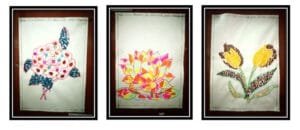Spandan's Evolution
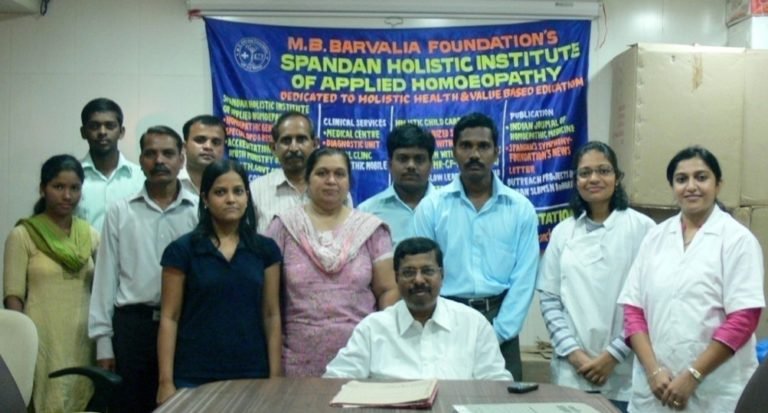
Case Study 1 – MISS RUCHI
Ruchi was a sweet child but quite impatient and awkward. She had lost total interest in studies because she would fail to copy down from the blackboard. Her writings were atrocious with a number of spelling mistakes. She wrote ‘b’ instead of ‘d’ and jumbled up spelling. Somehow she was promoted in 3rd standard, while 4th was now difficult.
She was extremely sensitive, quite resentful and would always consider herself low compared to others. A colleague who treated her with NATRUM MUR without any relief referred to her Recurrent pharyngitis and dreams of a snake clinched the diagnosis of LAC CALCIUM, which not only improved behavior, but also improved the writing skill.
Now she felt well motivated for school but improvement in scholastic performance was short lived. Impatience and awkwardness also improved to some extent.
One Sunday morning in 1991 September, I went to Ruchi’s house to see her ailing – bedridden paternal grandmother. While I was examining the old lady, I heard Ruchi’s mother shouting : did you finish your exercise with swings? Your skipping rope is lying here – you have not even touched today”. “Okay mom, I will do it” — replied young Ruchi and went swimming. I was surprised. I asked her mother about this. She told me about an occupational therapist whom they have been submitting for her dyslexia. Now, he has suggested intensive exercise with swimming and skipping ropes. I put her on placebo and observed the impact of swings. After some time, I saw LAC CANINUM kind of response with these.
I was astonished. I met the occupational therapist who has been seeing Ruchi for the last 3 years. He told me that Ruchi’s behavior and sensitivity substantially improved after your medicines. His therapy & remedial teaching became much more effective after LAC CANINUM. Parents became complacent and abandoned therapy. Scholastic difficulties compelled them to consult him once again.
After reinstitution of the therapy, writing improved substantially. Again stagnation with awkwardness and clumsy behaviors worsened. I resumed Lac can , & it did wonders.
Following Points Emerged:
- Imparied sensory processing can lead to dyslexia.
- Homoeopathy can correct the defective sensory processing.
- Sensory integration (part of occupational therapy) helps to correct dyslexia.
- Homoeopathy and Sensory Integration improve sensory processing and thereby can help DYSLEXIA.
- If remedy covers the entire pattern of learning disorder, the depth is much more & so the impact. Lac can have deeper & wider coverage.
I went to the basics. I was always impressed by the great scientist JEAN PIAGET, the great scientist, physiologist who had done pioneering work on child development.
His teaching showed maximum practical application PERCEPTION is cognitive ability to receive and make sense of incoming stimuli. There is a relationship between perception and physical movement. When a child traces a line, he alters the movement and direction of his hand in response to feedback from visual information. He believes that basic skills – eye-hand coordination, temporal-spatial integration and form perception – must be taught in their natural order of development. Children who are weak in this area will demonstrate definitely buttoning, lacing, cutting, lasting, WRITING AND ALSO COPYING from the blackboard. They will get confused by shape, size, and position of objects. If one needs to correct them, they will need to grasp “motor patterns” & not isolated skills.
Thus faculty integration of sensory processes becomes an important factor for causation and maintenance of various learning disorders. These children do present with awkwardness, clumsy behavior, and hyperactivity.
Here lies the role of Homoeopathic sciences. Various children prototype – Homoeopathic profiles describe these features. Number of Homoeopathic drugs in the proving has brought out characteristics features which we relate to learning disorders:
- Makes mistakes in writing and speaking
- Omits final letter or letters of a word when writing (Lac caninum = Hering page 515)
- Uses the wrong syllabus, mixes up letters and syllabus or omits parts of words (Hering page 91)
- While writing transposing letters: China2 Lyc2 (Kent Rep. 67)
- A careful study of these drugs indicates the presence of various other coordinates like:
- Clumsiness, awkward, hyperactivity
- Bangs head while turning
- Missing steps
Critical interpretation of these patterns brings us to conclude about the syndrome which is similar to the dysfunction of sensory processing. We see defects in laterality, direction, spatial orientation, etc. You get evidence of various perceptual difficulties.
We can conclude that Homoeopathic medicines can positively modify these defects. They are present in children with various types of developmental disabilities.
These are fairly structured patterns that are integral components of the system. They cannot be eradicated totally by medicines but can suitably be modified by proper similimum. This makes them extremely receptive to other therapeutic measures, which can consolidate these gains and enhance learning.
Case Study 2 – MASTER RAGHAV
Raghav was a 7 years old child who was extremely hyperactive with poor writing skills. Clinically he was diagnosed as a slow learner.
Behavior improved substantially with Homoeopathic treatment. The perceptual error showed partial relief. My coordination with occupational therapist cum remedial teacher brought out substantial improvement.
Following points can be inferred:
- As Raghav grew, stress increased & performance deteriorated. Parents received a repeated thrashing from school. Teachers were briefed about Raghav’s clinical condition as slow learner & ADHD. They would hardly comply. Our presentation to the principal had a temporary effect ….. cease for 6 months. Eventually, Raghav was out of mainstream school. I personally approached the trustee of another school who was a good friend of mine. Teachers co-operated initially, followed by similar encounters. So many Raghav’s were waiting for integrated special help. I strongly felt we need to have such a setup. Homoeopathy in the centre will make such material difference.
- Way back in 1992, I decided to give my waiting room & I cabin on Saturday & Sunday for these special kids from the Ghatkopar clinic. The response was heartening but the strong need was felt to have an exclusive set up.
Case Study 3 – MISS SALONI
SALONI was cretin, diagnosed quite early because of a sharp observant mother. At the age of 4, they consulted me. Homoeopathy helped to improve immunity as well as sensitivity. Intensive & timely intervention by O.T. & remedial teacher in the clinic accelerated her mental growth. It is heartening to note that SALONI walked as assistant to special educator in Spandan’s classroom.
The orthopedic surgeon was happy to note an improvement in tone & athetoid component as well as gait in spastic 8 years old Harshad. He had received Homoeopathy for 3 years. Now it was possible for him to undertake surgical intervention followed by Homoeopathy as well as therapy. Multidisciplinary holistic intervention restored smiles on gloomy parents.
Series of such experiences proved beyond doubt the significant contribution Homoeopathy makes when applied to special children. Experiences also demonstrated how crucial is the role of the multidisciplinary approach. The synergy produced is profound & charges direction of life. Today we are glad to mention that Raghav cleared SSC & is doing a vocational course in Automobile. Mother not only dedicated herself for his studies but became a volunteer teacher for all the Raghav’s.
Last but not least important is my childhood experiences. I was in V std & I loved teaching other kids. In my friend circle, Jatin also occupied a distinct role. He had dysmorphic features & all the characteristics of M.R. Parents felt so happy when they found that I am taking Jatin’s care & I am friendly towards him. Gratitude in their eyes made it so embarrassing. What is required is not mere compassion but real vibrations from within with constructive actions.
These experiences helped me to conceive of a system, which can identify these motor patterns and address them with great intensity and force so that this dyscrasia is dealt with in the early phase of life.
Perceiving child demands observing that infant in the mother’s lap, receiving the first images, which the external world casts upon the dark mirror of his mind. Child walks, talks and acts with those images at the back. The psychosocial inputs, which the child receives in the early formative years, are crucial for the growth and development of the child. To understand the inner dynamics of the child, it is important to grasp his environment – his school, his parents etc. For “effective learning” to take place in the child, he needs to receive and assimilate concrete, consistent and balanced inputs. Whenever there is a disorder of learning, one should look back to all these parameters. This will take us to philosophical, psychological and physiological dimensions of LEARNING.
We can perceive the state of the child with respect to following perspectives:
- Motor patterns as described earlier.
- Sensory patterns: Receiving & processing of sensory inputs: Touch, sound, smell, vision etc: ,<3 Noise, startled from sudden sound, Closes ears – auditory closure etc. e.g. Borax, Stramonium Asarum , theridion.
- Sensitivity Patterns
Case Study 4 – MISS SAKSHI PAGARE
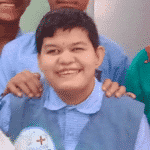
Diagnosis: Autism & Severe Mental Retardation
Disability: 90%
Physician: Dr. Praful Barvalia
Educator: Mrs Sudha Shetty & Mrs Deepmala Nikam
On 10th Dec 2002, Sakshi was born full-term through normal delivery process to non-consanguineous parents. Sakshi is staying with her maternal grandfather. It was reported that her mother was mentally ill and was on medication. She was also given electroconvulsive therapy for the same. At the age of 18 months, after her maternal grandmother’s death, the family atmosphere changed. It was reported that Sakshi is very restless, and communicates her need non verbally through gestures. And when her demands are not met, she throws temper tantrums. She repeats the word spoken to her. She remains aloof, withdrawn and act standoffish in a group situation.
Sakshi showed severe mental retardation in social functioning. She was dependent on her caregivers, for dressing and cleaning. Her symptoms increased when her aunt stopped her medication due to weight gain along with increased hyperactivity. She found it difficult to overcome simple obstacles. Other problem areas were frequent shaky and swirling movements of hands and body, eating non-food objects occasionally, sensitive for light and auditory sensitivity, assistive ADLs and always avoiding eye contact.
At Spandan, her treatment included SI, vibrating oral motor stimuli, group therapy and physical activities along with homoeopathic medication. She showed extraordinary improvements. Hyper activeness reduced to a larger extent. She started understanding about herself. When she had joined the institute, she barely responded to anything and hardly participated in any activity. But now, she does her job with continuous commands, her sitting tolerance has improved. She can write a bit and can also colour drawings. She is very fond of eating and enjoys music.
Few images of paintings and crafts done by Sakshi:
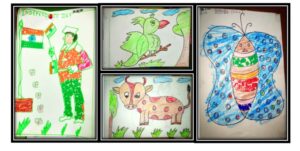
Case Study 5 – MASTER KEDAR TIRAVDEKAR
Diagnosis: Mild Mental Retardation with Epilepsy
Physician: Dr Praful Barvalia
Educator: Mrs Ratnamala Saboo and Mrs Ajanta IyerKedar Tiravdekar now in his 20s, suffers from mild mental retardation along with epilepsy.
As a child, he achieved his motor milestone on time but not his speech milestone. He suffered from an epileptic attack at the age of 6. He studied in a regular school till 3rd grade. In 2009, he left the school due to repeated failure. It was the same year that his parents enrolled him to the M.B Barvalia Foundation’s Special School for Slow Learners. The foundation also subsidized the school fees considering the poor socio-economic class of his family.
At the time of joining, he lacked confidence and was an extremely shy child. Even though his peer relation was good, he had a hard time communicating. Along with joining the school, he also began his homoeopathic treatment with Spandan Holistic Institute. Within a year, changes were visible with respect to his behaviour and communication. There was also a great improvement in his level of confidence. The school over the years further improved his social presence and his academics. Initially, his speech was unclear, there was a lack of stress and intonation patterns and he had problems articulating but over a period of time, his speech/language also improved substantially.
After two years of basic training in all academic subjects, he successfully passed Pratham level A in April 2012 and within a year completed Pratham level B in April 2013. He further prepared for his NIOS SSC and successfully cleared his board exams in April 2015. He also completed his MSCIT which is a certification in Information Technology with a distinction score of 75%. These achievements were well beyond the expectations of his parents and they were extremely thankful to the Barvalia foundation and Dr Praful Barvalia. They also believe that the successes in their son’s life would never have been possible without the efforts of his teachers Mrs Ajanta Iyer, Mrs Ratnamala Saboo and all the members of the Special School for Slow Learners. Later, he also cleared his 12th board exams and is currently preparing for an exam which would help him get certified in Tally which would help him land a job in the future.
Case Study 6 – MASTER JINAY SHAH
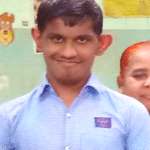
Diagnosis: Autism re-evaluation & Mental Retardation
Disability: 75%
Physician: Dr Praful Barvalia
Educator: Mrs Sudha Shetty & Mrs Deepmala Nikam
Jinay had a premature but normal birth to non-consanguineous parents with the delayed developmental milestones being inappropriate. He lived with his parents. There is a family history of mental retardation. The consultation report indicated moderate autism with mild impairment in social adaptive functioning. The major concerns were of being hyperactive, restless, poor attention and concentration and delayed speech. Several tests such as GARS-2, VSMS and CARS helped to identify the presence of autistic behaviour. He had fear of crowded places, engaged in smelling objects and had poor eye contact.
When he joined Spandan during August 2010, Jinay was very restless and fidgety during the testing session. He also showed traits of being non-compliant and rebellious, often injuring others and engaging in self-biting. Under the guidance of Dr. Praful Barvalia and regular homoeopathic medication, He has immensely worked on his hyperactive and impatient behaviour. There has been a significant improvement in his cognitive abilities. Routine therapy and special education have been a key for him to be more tolerable to an auditory stimulus, be patient enough to sit for long in school.
Now he waits for his turn in the classroom. He performs several activities requested by the teachers and parents. The traits of anger, self-biting has reduced to a large extent. He also helps in certain household tasks. He can talk short sentences and relate an experience. He loves interacting with new people and always try hard to help others. As per our latest interaction with Jinay, we found him to be very fond of Bollywood music. He memorizes the songs pretty well and also dances to the tunes. He is also good in arts and crafts.
Few images of drawings and crafts done by Jinay:
